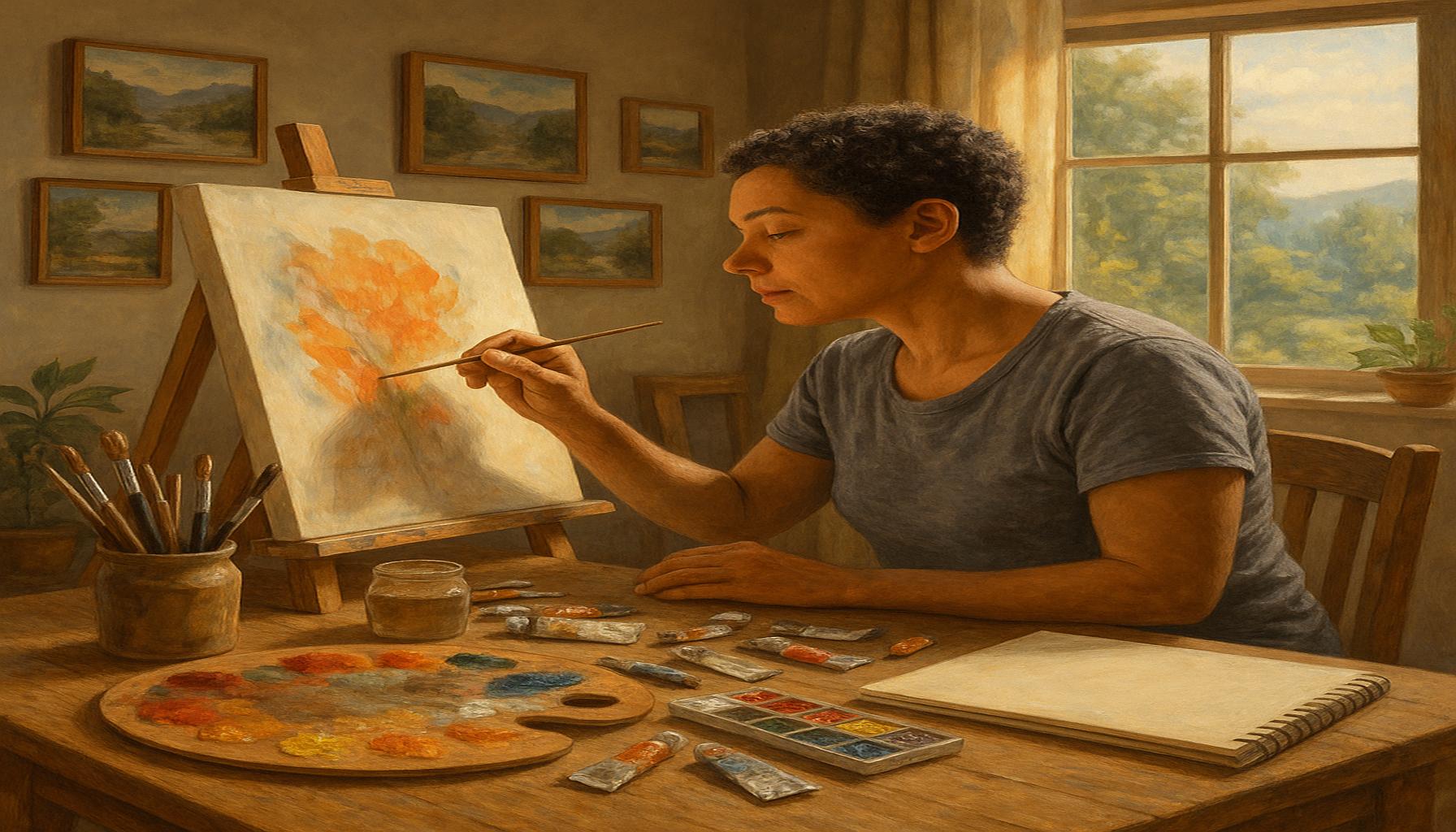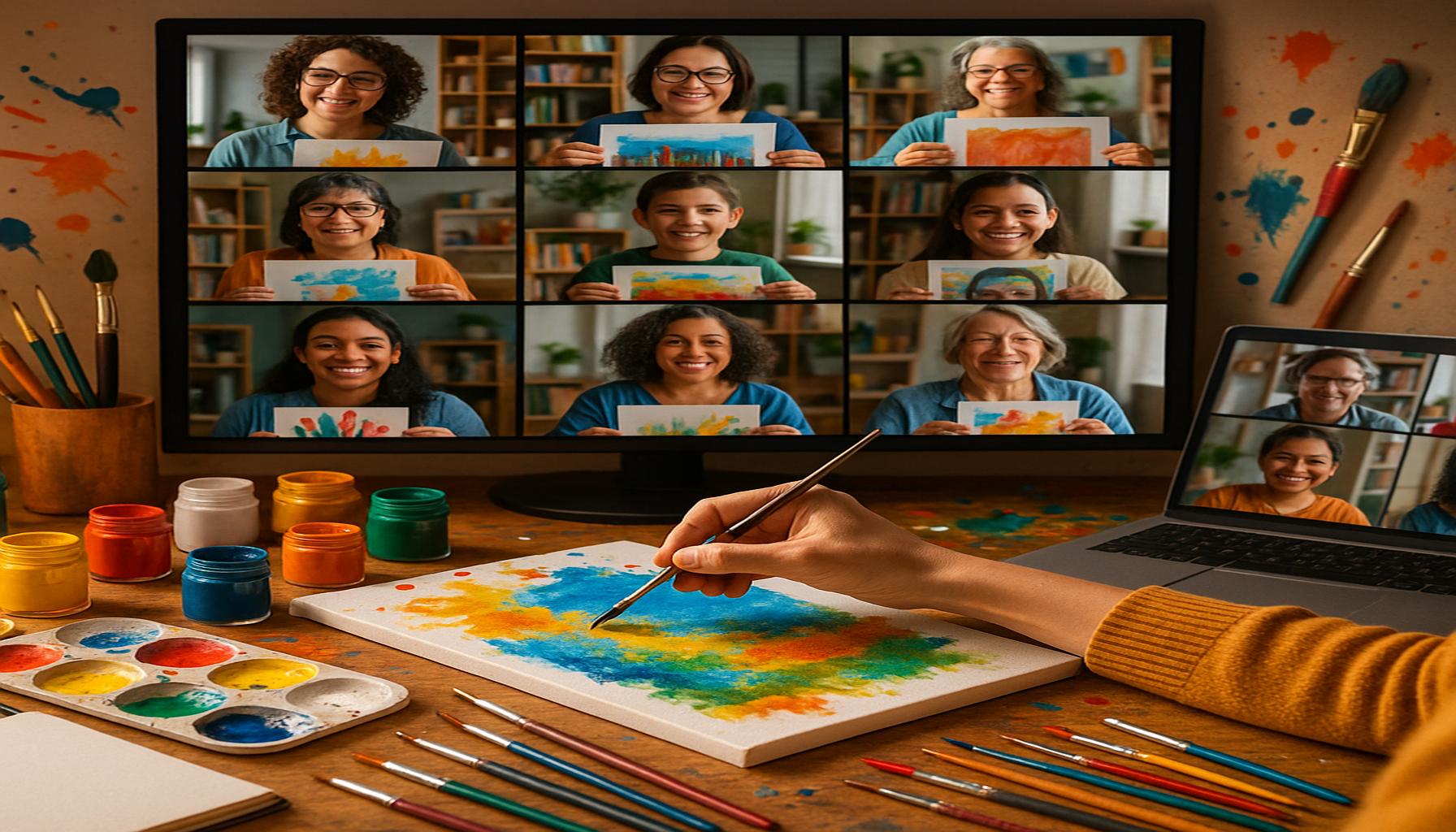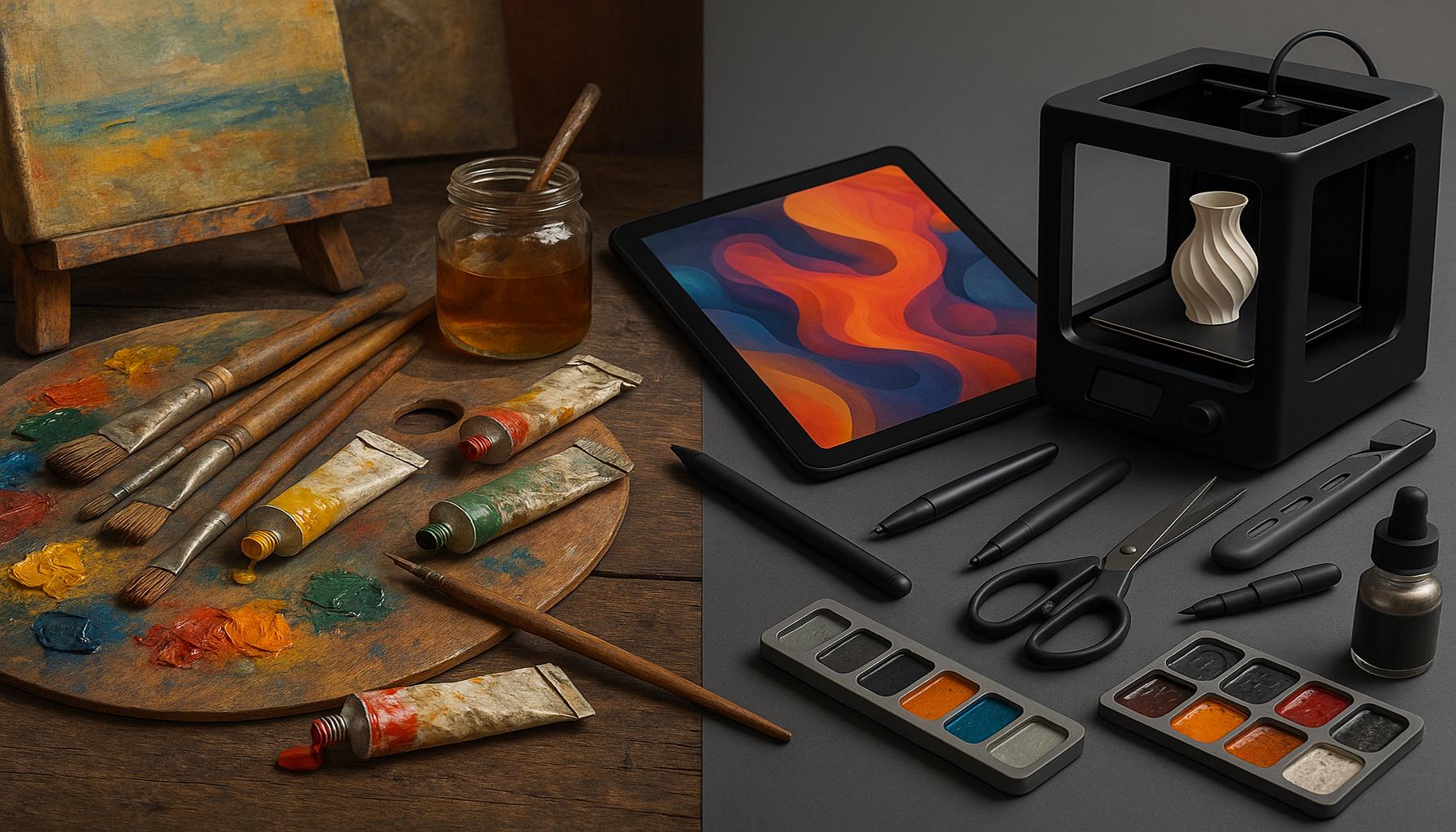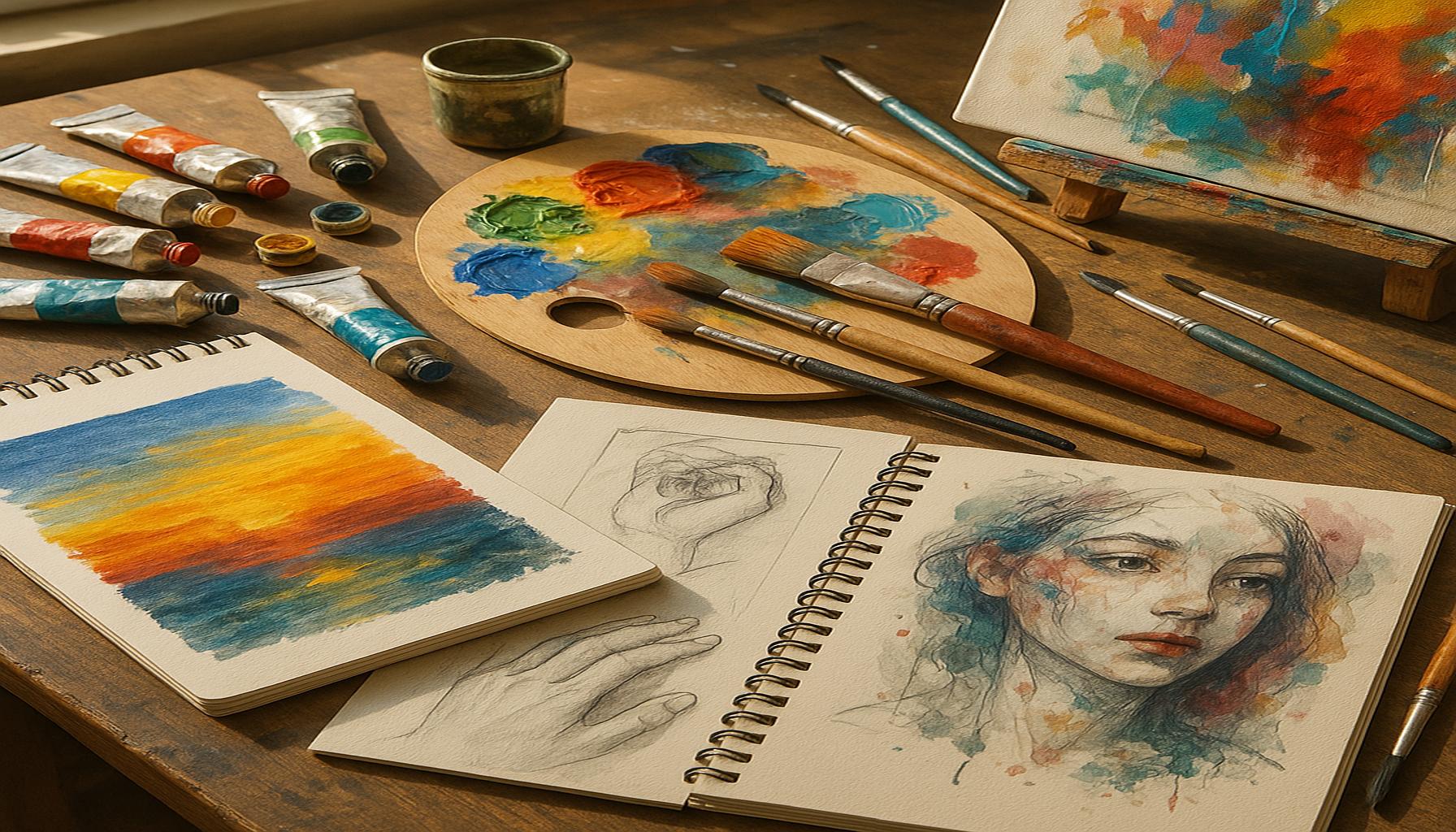Art as Therapy: Exploring the Psychological Benefits of Creative Hobbies

The Healing Power of Creativity
In a world filled with stress and uncertainty, many individuals are seeking solace in creative activities. Engaging in art as therapy offers a pathway to enhance mental well-being and promote emotional healing. By exploring the psychological benefits of creative hobbies, we can uncover how artistic expression fosters a deeper connection with ourselves. The therapeutic effects of creativity are not limited to professional artists; they can be equally transformative for anyone willing to pick up a brush, pen, or any other medium.
Artistic endeavors such as painting, drawing, writing, or crafting serve not only as pastimes but also as powerful tools for personal growth. These activities can help individuals break free from the constraints of daily life and provide a unique means of navigating their thoughts and feelings. Here are some noteworthy benefits of incorporating art into your life:
- Reduces stress: Creating art can significantly lower anxiety levels and promote relaxation. Studies have shown that engaging in artistic activities can decrease the body’s levels of cortisol, a hormone associated with stress. Even a brief period spent drawing or painting can feel meditative and calming.
- Enhances self-esteem: Producing tangible evidence of creative work can boost confidence and sense of accomplishment. When individuals complete a piece of art, it serves as a physical representation of their effort and creativity, reinforcing a positive self-image.
- Encourages self-expression: Art allows individuals to express emotions and experiences that may be difficult to communicate verbally. For instance, people dealing with trauma often find solace in creating visual representation of their feelings, providing a therapeutic outlet for difficult emotions.
- Improves focus: Engaging in art can help train the brain to concentrate, enhancing overall cognitive function. Activities like coloring or sculpting demand attention to detail, thus sharpening focus and improving mental clarity.
The opportunities for creative exploration are vast and varied. Many art institutions and community centers in the United States offer classes aimed at bringing out the artist in everyone, whether it’s through painting, photography, or crafting. For those who prefer a more independent approach, DIY projects or online workshops present endless possibilities, allowing for flexibility and creativity at one’s own pace. Workshops like those found on platforms such as Skillshare or local meet-ups provide ample resources for those looking to dive deeper into their artistic side.
As you delve into the realm of creative hobbies, consider how they can act as a catalyst for emotional resilience and mental clarity. The act of creating is not merely about skill; it is about exploration and discovery, paving the way for personal healing and growth. Embrace the journey of creativity, and you may just unlock a new path toward understanding and nurturing your own mental health.
DISCOVER MORE: Click here to find out how music can inspire your creativity
Unlocking Emotional Well-Being Through Creativity
The intersection of art and mental health is increasingly gaining attention as research continues to unveil the profound benefits of creative hobbies. Engaging in art as therapy is not merely an outlet for self-expression; it acts as a gateway to restoring emotional equilibrium. By leveraging the innate creativity that lies within each individual, art therapy becomes a source of healing and personal expression that can resonate deeply, even for those who might not consider themselves ‘artists.’
The psychological impacts of creative activities extend far beyond the canvas or sketchbook. Individuals who participate in art-related hobbies often report an enhanced sense of well-being, and this is supported by substantial data. For example, a study featured in the Journal of the American Art Therapy Association found that just 45 minutes of creative activity can lead to significant reductions in stress and anxiety levels, marking a noteworthy contrast to the hectic pace of modern life. This reveals a powerful truth: that investing your time in creative endeavors can yield remarkable improvements in mental health.
Moreover, the act of creating can facilitate a transformative process. Here’s a closer look at some pivotal psychological benefits:
- Fosters emotional release: Art provides a safe space for individuals to channel suppressed emotions. Whether it’s through painting bold strokes or weaving narratives, participants can articulate feelings that may be challenging to verbalize. This release can lead to lighter emotional burdens and greater self-awareness.
- Strengthens coping mechanisms: Engaging in artistic pursuits cultivates resilience. Many find that the discipline involved in consistently creating can bolster their ability to handle life’s challenges. As they navigate through colors, textures, and forms, individuals develop skills that translate into more effective coping strategies in their everyday lives.
- Facilitates social connections: Creative hobbies often encourage community involvement. Group art classes, workshops, or collaborative projects foster connections among participants, reducing feelings of isolation. Building these social bonds can create a support network that enhances emotional health.
- Boosts mindfulness: Many artistic activities draw participants into the present moment, acting as a form of mindfulness practice. By concentrating on the process—each brushstroke or note played—individuals are less likely to dwell on past regrets or future anxieties, leading to improved mental clarity and peace.
Additionally, organizations such as the National Alliance on Mental Illness (NAMI) advocate for the inclusion of art therapy approaches in mental health treatment plans. Through various programs and initiatives, they highlight the importance of accessible creative outlets in promoting psychological wellness among diverse populations. These resources are invaluable for individuals seeking to integrate art into their journey toward healing.
As we continue to explore the multitude of benefits that emerge from creative activities, it becomes increasingly clear that art isn’t just a pastime; it can be an essential component of a holistic approach to mental health. Embracing art as therapy opens doors to new dimensions of understanding, allowing individuals to confront emotions, cultivate resilience, and ultimately find healing through creativity.
Unlocking Emotional Alchemy: The Transformative Power of Creative Expression
Art as therapy utilizes the beautiful, expressive nature of creative hobbies to lead individuals toward emotional healing and psychological well-being. Engaging in artistic activities—whether through painting, drawing, sculpting, or writing—can serve as a powerful tool to unlock buried emotions and facilitate self-discovery. Research indicates that creative expression can reduce symptoms of anxiety and depression, helping individuals to process their feelings in a safe, constructive manner.Furthermore, individuals often find that immersing themselves in various forms of art can enhance their cognitive flexibility. As they create, they learn to embrace the unpredictability of the artistic process, which translates to improved problem-solving skills in everyday life. This newfound creativity can positively influence personal relationships, as it fosters open communication and builds empathy through shared experiences.Moreover, regular engagement in creative hobbies provides a much-needed escape from daily stresses. The act of plunging into a painting or crafting a story allows individuals to enter a state of flow, a mental state where time becomes irrelevant, and the weight of the world is momentarily lifted. This transcendence contributes to overall happiness, igniting a lasting passion for creativity that benefits both mental health and personal fulfillment.Creativity also offers individuals a framework for exploring their identity, enabling them to navigate complex life experiences. Whether cultivating joy or facing grief, artistic expression provides an avenue for reflection and introspection, allowing participants to ponder their experiences deeply. As more studies emerge highlighting the mental health benefits of creative hobbies, we find an ever-increasing interest in integrating art therapy into traditional healing systems. Increasing access to these therapeutic practices can foster communities of support centered around creativity, encouraging individuals to explore their emotions while enhancing their overall quality of life.
| Advantage | Description |
|---|---|
| Emotional Release | Creative hobbies facilitate expressing and processing complex emotions, reducing anxiety. |
| Cognitive Flexibility | Artistic activities promote problem-solving and adaptability, enhancing daily functioning. |
DISCOVER MORE: Click here to learn how creativity can ease stress
The Transformative Power of Artistic Expression
Beyond fostering emotional release and mindfulness, engaging in art as therapy offers profound insights into personal identity and self-image—a crucial aspect of psychological well-being. In a world where many face societal pressures and expectations, the act of creating art serves as a vehicle for self-discovery. For individuals navigating complex issues of identity, gender, or trauma, art can be a reflective surface, allowing them to explore and reconstruct their narratives. This journey often leads to increased self-acceptance and a deeper understanding of one’s individuality.
Creative expression also invites vulnerability, encouraging individuals to confront uncomfortable feelings and past experiences. Art therapy can provide an avenue for individuals to process and articulate traumatic events. For instance, survivors of abuse may find solace in artistic forms, transferring buried emotions onto a canvas or into a sculptural piece. Such activities can transform pain into a shape or color, enabling a profound sense of control over their trauma and facilitating healing.
Moreover, the benefits of art therapy extend into the realm of cognitive function. Activities such as drawing, painting, or crafting can enhance problem-solving skills, critical thinking, and even memory. Research has shown that participation in creative hobbies can stimulate neurogenesis—the process of forming new neurons—thus potentially reducing the risk of cognitive decline as one ages. This makes art not only a therapeutic outlet but also a mental workout, encouraging brain health throughout the lifespan.
For children and adolescents, incorporating art into therapeutic practices is especially impactful. The American Art Therapy Association notes that engaging young people in creative activities can significantly improve emotional regulation, self-esteem, and social skills. For instance, art therapy programs in schools often help children communicate feelings they might not vocalize, making it an invaluable resource for fostering emotional intelligence from a young age. These programs are increasingly being implemented in urban settings, where access to traditional mental health services may be limited.
The accessibility of art therapy is another vital element in its growing popularity. In recent years, remote art classes and creative workshops have proliferated, particularly in the wake of the COVID-19 pandemic, which has shifted many interactions online. This digital pivot means that individuals can engage with art therapy from the comfort of their homes, connecting with skilled practitioners and fellow creatives around the globe. Many online platforms even offer resources for guided art activities, making this form of therapy available to a wider audience.
Furthermore, community art initiatives—often found in urban environments—play a crucial role in democratizing access to artistic expression. Projects like community murals, public art installations, and creative writing workshops provide spaces for collective participation, drawing in diverse individuals from varying backgrounds. These communal endeavors not only foster personal healing but also promote social cohesion, illustrating the power of collective creativity in enhancing community well-being.
As modern society continues to grapple with rising mental health challenges, the significance of integrating art into therapeutic practices becomes increasingly clear. By prioritizing the creative process, individuals can unlock newfound resilience, self-expression, and cognitive rejuvenation, establishing art as not just a recreational activity but an essential pathway to mental wellness.
DISCOVER: Click here to learn about sustainable crafting
Conclusion: Embracing Art for Mental Wellness
In conclusion, the exploration of art as therapy highlights a profound intersection between creativity and psychological well-being. The evidence underscores that engaging in creative hobbies can facilitate emotional release, promote self-discovery, and offer therapeutic pathways for individuals grappling with personal and communal challenges. Whether through painting, sculpting, or creative writing, the act of creating not only fosters emotional regulation but also cultivates skills critical for navigating life’s complexities.
Moreover, the accessibility of art therapy—amplified by digital platforms and community initiatives—ensures that individuals from all walks of life can harness the benefits of artistic expression. Programs implemented in schools and community centers are particularly vital for empowering the younger generation, fostering emotional intelligence and resilience from an early age. Thus, these creative outlets become more than mere activities; they evolve into lifelines that connect individuals to greater self-awareness, social cohesion, and cognitive enhancement.
As we continue to navigate an increasingly complex world, embracing the therapeutic potential of art is essential. Art as therapy is not just a fleeting trend, but an invaluable tool for enhancing mental health in a diverse society. Therefore, it beckons us to dive deeper into our creative instincts, capitalize on these experiences, and advocate for the integration of artistic practices into holistic mental health strategies. By doing so, we pave the way for a more expressive, resilient, and thriving community.


